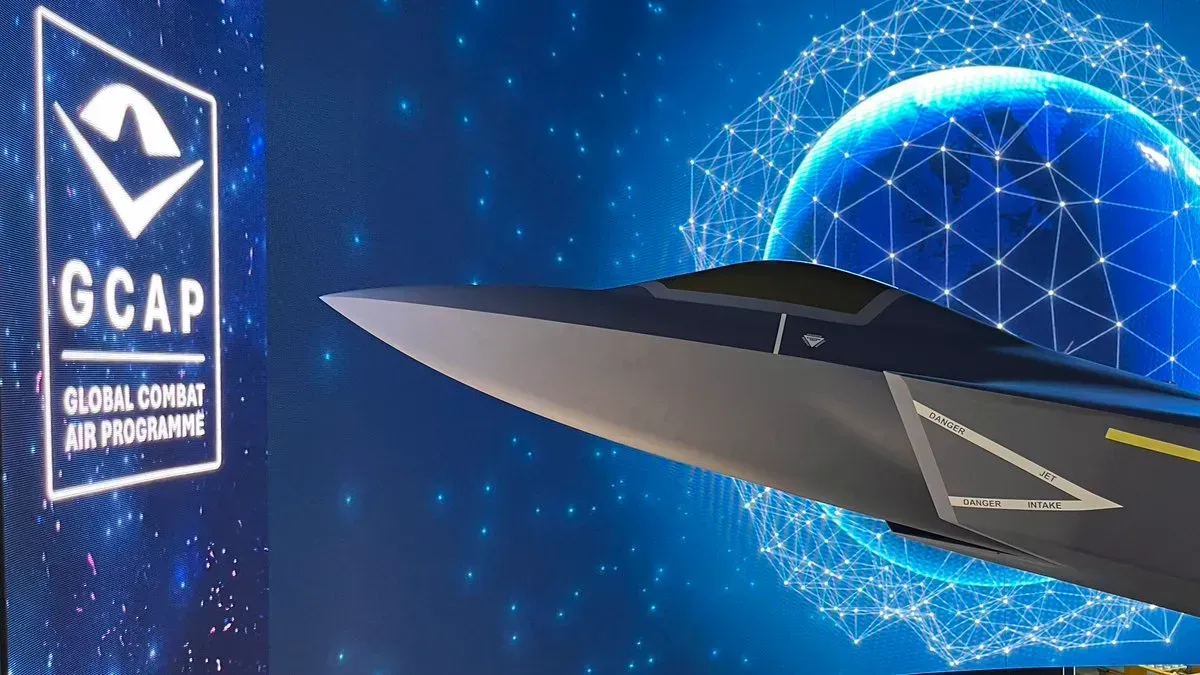Flying High: ARPAS-UK and the Soaring Future of Drones and Urban Air Mobility in UK Aerospace

The UK aerospace sector, a global leader in innovation and high-value manufacturing, is on the cusp of a transformative era, driven by the rapid evolution of drone technology and Urban Air Mobility (UAM). This article delves into the pivotal role of ARPAS-UK (The Association of Remotely Piloted Aircraft Systems UK) in championing the sustainable growth and professional standards of this dynamic industry. We explore how the sector has experienced significant advancements and growth over the last five years, offering South East England's aerospace manufacturing sector unprecedented opportunities to solidify the UK's position as a key global player in this exciting future of flight.
The UK aerospace sector, a cornerstone of high-value manufacturing and innovation, is entering an exciting new era, driven by advancements in drone technology and Urban Air Mobility (UAM). For our aerospace manufacturing sector in South East England, this rapidly evolving landscape presents significant opportunities for growth and global leadership. At the heart of this transformation is organisations like ARPAS-UK (The Association of Remotely Piloted Aircraft Systems UK), the unified voice advocating for the sustainable growth and professional standards within this dynamic industry.
ARPAS-UK: Championing Growth and Best Practice
Formed in 2013, ARPAS-UK is a non-profit association dedicated to representing the small Remotely Piloted Aircraft Systems (RPAS), or drone, industry in the UK. Its core mission involves promoting best practices, fostering a culture of collaboration and information sharing among members, and ensuring that all operators are effectively represented to key stakeholders like the Civil Aviation Authority (CAA) and NATS. By setting standards and actively engaging with regulators, ARPAS-UK helps end-users identify skilled and appropriate drone operators, thereby strengthening the industry's credibility and facilitating market adoption.
ARPAS-UK is deeply involved in influencing the regulatory landscape, working closely with the CAA and the Department for Transport (DfT) to shape a fair and forward-thinking environment for drones. This includes participation in initiatives like the CAA Electronic Conspicuity Technical Cooperation Group and offering input on reviews of UK drone regulations.
Significant Growth and Advancements in the Last 5 Years
The past five years have seen remarkable growth and technological leaps in the UK drone and UAV sector:
- Economic Impact and Market Growth: The drone sector is a powerful economic engine. By 2030, PwC estimates drones could contribute up to £45 billion to the UK economy, generating £22 billion in net cost savings and creating 650,000 jobs. The commercial drone market was valued at USD 32.5 billion in 2023 and is projected to register a CAGR of over 10% between 2024 and 2032 globally, with autonomous drones expected to reach USD 15 billion in revenue by 2032. The UK commercial UAV market specifically is expected to grow at a CAGR of 17.3% from 2024 to 2030, reaching a projected revenue of US$1,907.6 million by 2030.
- Regulatory Evolution: The UK is striving to be a world leader in unmanned aircraft regulation. The CAA is committed to making Beyond Visual Line of Sight (BVLOS) operations an everyday occurrence, addressing regulatory challenges and developing frameworks to integrate these operations safely into congested airspace. This involves exploring atypical air environments initially and, in the medium to long term, enabling detect and avoid technologies and electronic conspicuity. The Airspace Modernisation Strategy (AMS) aims to simplify airspace design and integrate innovative aviation technologies, including Advanced Air Mobility (AAM).
- Technological Innovations: Innovation is driving the sector forward. Advancements in AI, machine learning, and navigation systems are enabling autonomous drone operations with minimal human intervention. Additive manufacturing (3D printing) is also advancing sustainable manufacturing by reducing material waste and enabling lightweight, optimized structures crucial for drone development. The UK aerospace industry's competitiveness is underpinned by its advanced R&D and innovation capabilities, with continuous investment needed to seize opportunities from these emerging trends.
- Diverse Applications: Drones are increasingly being used across various sectors for tasks such as:
- Agriculture: Crop monitoring, spraying, precision farming, and field analysis.
- Construction & Infrastructure: Site inspection, progress monitoring, structural inspections, mapping culverts and drains, and even potential repair of infrastructure.
- Emergency Services: Rapid response, search and rescue, fire and rescue support, and medical deliveries, enhancing safety and efficiency.
- Logistics & Delivery: Parcel delivery, including autonomous delivery of COVID tests and PPE, and postal services in remote areas.
- Environmental Monitoring: Methane detection, flood response, and wildlife research/preservation.
- UK Expertise and Infrastructure: The UK boasts a thriving drone ecosystem with over 650 firms and strong R&D capabilities. Key areas like Oxfordshire, Bristol, Newcastle, Southampton, and Edinburgh have clusters of technology developers. The world's first urban drone airport, Air-One, opened in Coventry in 2022, demonstrating the intent to use sites for electric vertical take-off and landing (eVTOL) air taxis.
The Rise of Urban Air Mobility (UAM)
A significant development is the emergence of Urban Air Mobility (UAM), which describes new mobility concepts and the large-scale expansion of urban mobility into the air, using automated flying objects like eVTOLs (electric vertical take-off and landing) or air taxis to transport passengers and cargo drones for freight at low altitudes. This is no longer a distant dream, but a near reality, with the UK actively pursuing this "third revolution in aviation".
The UK government is a strong supporter, committing over £20 million to help drones and flying taxis take to UK skies. This funding supports innovative projects, positions the UK as a global leader, and addresses key industry issues through the Future Flight Challenge (FFC). The FFC, co-funded by industry and government, focuses on demonstrating the safe integration of drones, advanced air mobility, and advancements in electrification and autonomy.
The UK Urban Air Mobility Consortium, including entities like Eve Air Mobility, NATS, Heathrow Airport, London City Airport, Skyports, Vertical Aerospace, Volocopter, and Atech, is actively working to support UAM growth. Companies like Vertical Aerospace plan to certify their first eVTOL aircraft by 2025, and Skyports aims to open its first vertiport in London in 2024. Efforts are also underway to design "air roads" and ground infrastructure for electric air taxis and autonomous logistics drones, with a world-first programme demonstrated in Coventry. NASA estimates that over 70% of the potential UAM market value is dependent on infrastructure, highlighting the importance of these initiatives.
South East England: A Hub for Innovation
For the aerospace manufacturing sector in South East England, these developments translate into significant opportunities. The region already hosts a strong aerospace cluster, with entities like Airbus (Astrium EADS) in Portsmouth contributing to UK space capabilities. London, as a hub for digital tech and startups, has a high concentration of drone technology companies. Southampton anchors a larger coastal region with strong aerospace clusters, and increased R&D investment in the drone sector could further grow this hub.
The UK’s aerospace industry is at the forefront of tackling challenges like clean growth and future mobility, aiming to lead the world in electric and autonomous technologies.
Manufacturers in the South East are well-placed to contribute to the development of propulsion systems, advanced materials, and digital technologies critical for the next generation of drones and UAM vehicles.
The UK's Global Potential
Despite challenges such as international trade headwinds and supply chain difficulties, the UK aerospace sector remains healthy and is poised for future growth. The commitment to innovation, significant R&D investment, and government initiatives like the ATI Programme and Future Flight Challenge underpin the UK's ambition to be a global leader in advanced air mobility and zero-carbon emission air travel.
By embracing and contributing to these evolving areas, the aerospace manufacturing sector, particularly in technologically rich regions like South East England, can help the UK secure its position as a key global player in this exciting and transformative aviation future.
"The 22 billion is in refers to cost savings that UK businesses can make by 2030. And the £45 billion is the overall contribution to the UK economy. That's 1.6% of GDP. How that translates is also interesting. There will be a positive impact to jobs by 650,000 with millions of tons of carbon emissions saved"
Elena Major, PwC. The 'Skies without Limits' Report.
Drones and UAVs - An industry Guide
Drones, also known as Unmanned Aerial Vehicles (UAVs) or Unmanned Aircraft Systems (UAS), encompass a diverse range of form factors, each tailored for specific applications in both civil and defense sectors. These aircraft operate without a human pilot onboard, relying on remote control or varying degrees of autonomy.
Here's a comparison of key drone form factors and their primary sector classifications:
I. By Wing Configuration
Drone designs are fundamentally categorized by how they generate lift and sustain flight, impacting their speed, endurance, and operational agility.
- Fixed Wing Drones
- Characteristics: These drones gain lift from wings, similar to conventional aircraft, allowing for long-range capabilities and generally faster flight speeds. They are efficient for covering large areas but typically require a runway for take-off and landing, or a catapult launcher and net/parachute recovery, unless they are hybrid variants.
- Applications:Civil/Commercial: Professional mapping and surveying over extensive areas, surveillance, intelligence gathering, and potentially longer-distance medical deliveries. One participant in a UK drone industry report noted they opted for fixed-wing drones in busier areas due to less noise and a less "daunting" appearance compared to multi-rotors.
- Defense/Government: Used for intelligence, surveillance, and reconnaissance (ISR) missions, such as the BAE Systems HERTI (deployed in Afghanistan), BAE Mantis (MALE UAV demonstrator), QinetiQ Zephyr (High Altitude Long Endurance - HALE UAV), and the Stalker VXE30 (fixed-wing VTOL for ISR).
- Sector Dominance: Primarily favored for defense and commercial applications requiring long-range and endurance.
- Rotary Wing Drones (Multi-Rotor, Quadcopters)
- Characteristics: These drones generate lift using spinning rotors, much like helicopters. They excel at vertical take-off and landing (VTOL), hovering in place, and operating in confined spaces. This versatility makes them ideal for intricate tasks and urban environments. Types include single rotor, multi-rotor (e.g., quadcopter, hexacopter, octocopter).
- Applications:Civil/Commercial: Dominate the commercial drone market, accounting for over 75% of revenue share in 2023. Widely used in agriculture (crop monitoring, spraying), construction (site surveys, progress monitoring, structural inspections), surveillance, logistics, media, entertainment, and real estate for aerial imagery and video. Also used for close-range inspection of assets like bridges and roofs. Examples include the DJI Phantom for consumer use and DJI Inspire for professional filmmaking.
- Defense/Government: Small rotary drones like the Black Hornet (nano-drone for the British Army), Bug Drone (nano-drone for various payloads including listening), Drone 40 (D40) (nano UAV/loitering munition for surveillance), and Ghost MK4 (VTOL helicopter used by Royal Marines) are in service. The Leonardo Proteus is an uncrewed rotorcraft in development for the Royal Navy.
- Sector Dominance: Strong in both commercial and defense sectors, especially for tasks requiring agility and precision.
- Hybrid Drones
- Characteristics: These designs combine the best features of both fixed-wing and rotary-wing aircraft, offering VTOL capability for versatile take-off and landing, coupled with wings for efficient forward flight and longer endurance. They are often designed with redundancy in propulsion systems to enhance safety.
- Applications:Civil/Commercial: Identified as the most lucrative product segment in the commercial UAV market, registering the fastest growth. Ideal for tasks requiring both hovering precision and extended range, such as medical deliveries in urban areas, traffic incident response where rapid arrival and detailed analysis are needed, construction and regeneration surveying, and fire and rescue operations. VTOL Technologies developed a Hybrid Flying Wing for energy distribution, transportation, logistics, and agriculture.
- Defense/Government: Heavy-lift VTOL drones like the Malloy T-150 (now part of BAE Systems) are used by the Royal Navy for cargo and munition supply operations.
- Sector Dominance: Emerging as a critical form factor across commercial, civil, and defense applications due to their balanced performance.
II. By Size/Weight Classification
Drones are also categorized by their Maximum Take-Off Weight (MTOW), which often dictates their capabilities, regulatory requirements, and typical use cases.
- Nano/Micro Drones (< 2 kg)
- Characteristics: These are very small, lightweight drones, often fitting in the palm of a hand (e.g., Black Hornet weighing less than 200 grams). They have limited range and endurance (e.g., 300m range for Black Hornet).
- Applications:Civil/Commercial: Leisure use, toy market (tens of thousands in the UK), personal photography, and specialized inspection of hard-to-reach areas.
- Defense/Government: Primarily for clandestine surveillance and reconnaissance in military operations (e.g., Black Hornet for exploring buildings, Bug Drone for various sensor payloads). The Drone 40 (D40), a nano UAV/loitering munition, was used for surveillance in Mali.
- Sector Dominance: Strong in defense and consumer/hobbyist markets, with some specialized commercial uses.
- Small Drones (2 kg - < 25 kg)
- Characteristics: Offer a wider range and endurance than nano/micro drones, while remaining relatively portable. Subject to specific airworthiness requirements if exceeding 20kg.
- Applications:Civil/Commercial: Professional mapping (e.g., Parrot/senseFly eBee), inspection, and surveillance. They can carry more advanced payloads than micro-drones.
- Defense/Government: Used for surveillance and intelligence gathering, such as the Puma AE (approx. 12 lbs, 9ft wingspan) and some of Selex ES's battlefield UAVs.
- Sector Dominance: Significant for commercial services and tactical military applications.
- Medium Drones (25 kg - < 150 kg)
- Characteristics: Capable of carrying larger payloads and achieving longer endurance. For example, the Stalker VXE30 has a 5m wingspan and weighs 20kg, with an 8-hour flight time.
- Applications:Civil/Commercial: Potential for inspecting pipelines/power cables, crop spraying, and search and rescue.
- Defense/Government: Border surveillance, forest fire monitoring, and more robust ISR missions.
- Sector Dominance: Important for specialized commercial tasks and defense operations requiring substantial capabilities.
- Large Drones (> 150 kg)
- Characteristics: These are very large aircraft designed for heavy payloads and very long endurance, potentially remaining airborne for days or months and traveling thousands of miles. They are significantly more costly.
- Applications:Civil/Commercial: While none are currently used commercially, there is potential for cargo transport.
- Defense/Government: Used for heavy-lift cargo and high-level strategic missions, like the Malloy T-150 (70kg payload) deployed with the Royal Navy's Carrier Strike Group.
- Sector Dominance: Predominantly in the defense sector, with future potential in heavy-lift commercial logistics.
III. By Operational Altitude/Endurance
Some military and specialized civil drones are classified by their operational ceiling and flight duration, reflecting their strategic capabilities.
- Medium Altitude Long Endurance (MALE) UAVs
- Characteristics: Capable of flying up to 30,000 feet and having a range of over 200 km.
- Applications: Primarily military for armed reconnaissance and surveillance (e.g., MQ-9 Reaper used by the RAF), and technology demonstrators (e.g., BAE Mantis).
- Sector Dominance: Predominantly defense.
- High Altitude Long Endurance (HALE) UAVs
- Characteristics: Designed for operations above 30,000 feet with potentially indefinite range.
- Applications: Strategic surveillance and scientific research (e.g., QinetiQ Zephyr, which achieved the world's longest unrefuelled UAV flight), and demonstrator projects like BAE Systems PHASA-35.
- Sector Dominance: Primarily defense and high-level scientific/atmospheric research.
IV. Cross-Cutting Form Factors and Technologies
- Unmanned Combat Aerial Vehicles (UCAVs): Specifically designed for combat operations. Examples include the BAE Taranis technology demonstrator and the Anglo-French Future Combat Air System. These replace expensive crewed fighter jets.
- Electric Vertical Take-Off and Landing (eVTOL) Aircraft: While often discussed in the context of Urban Air Mobility (UAM), these are distinct from smaller drones and are primarily for passenger and freight transport, such as air taxis. Coventry, England, opened the world's first urban drone airport (Air-One) in 2022 with the intent to use it for eVTOL air taxis.
- Manufacturing Technologies: 3D printing is revolutionizing drone and UAV manufacturing by allowing for accelerated design iterations, reduced component weight, and lower production costs. Companies like Prototal UK offer advanced 3D printing solutions for airframes, structural parts, motor mounts, sensor/antenna housings, and payload bays, using materials like carbon fiber reinforced polymers and flame retardant nylons.
- Autonomy: Drones are evolving from remotely piloted to semi-autonomous and fully autonomous, using advanced AI, machine learning, and navigation systems. Autonomous drones are projected to capture a significant revenue share in the commercial market by 2032. This includes systems that can operate Beyond Visual Line of Sight (BVLOS), which is a significant technical and regulatory challenge for scaling drone operations.
The landscape of drone form factors is continually evolving, driven by technological advancements in materials, propulsion (including electric, hybrid, and hydrogen fuel cells), sensors, and control systems, alongside changing regulatory frameworks and market demands.





